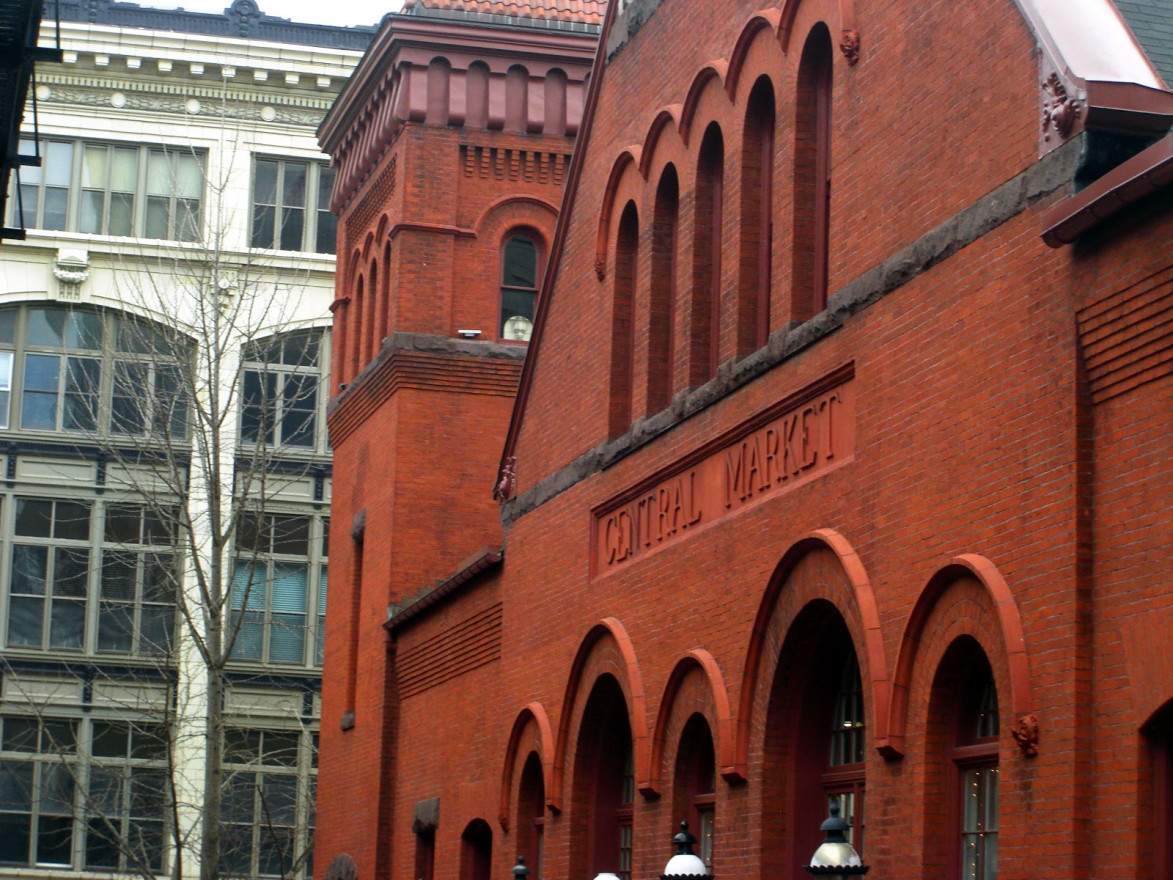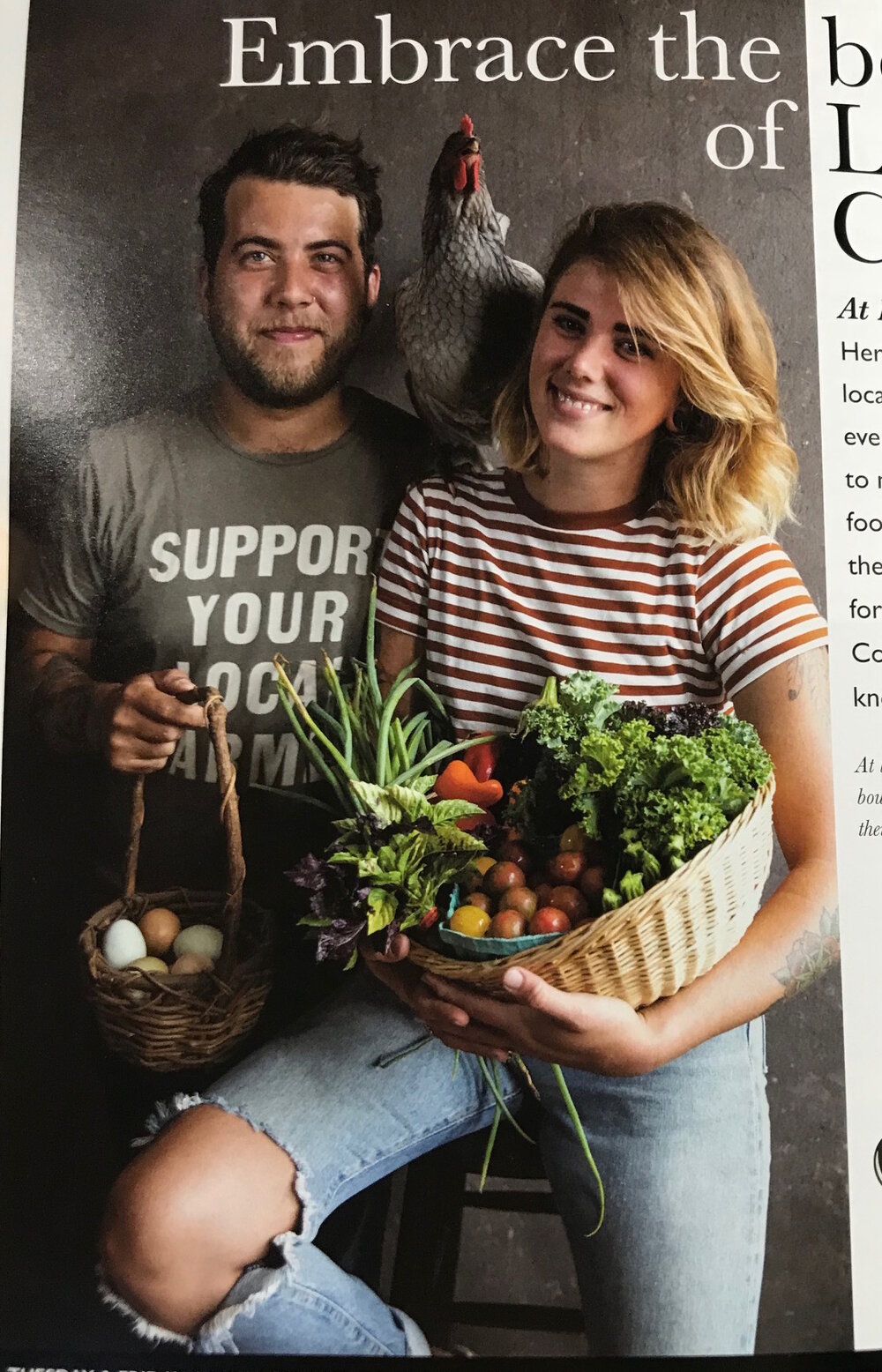
Lancaster Central Market in Lancaster, Pennsylvania, faced drastic customer reductions at the beginning of the pandemic, resulting in the closure of several stands, and yet most still endure. (Jared Kofsky/PlaceNJ.com/Creative Commons)

Lancaster Central Market in Lancaster, Pennsylvania, faced drastic customer reductions at the beginning of the pandemic, resulting in the closure of several stands, and yet most still endure. (Jared Kofsky/PlaceNJ.com/Creative Commons)
Even before the pandemic, Americans were struggling with hunger.
Projections estimate that more than 54.3 million Americans may experience food insecurity in 2020, according to a report by Feeding America. Before the COVID-19 crisis began, that number was 37 million. As of the first week of July, more than one in ten Americans had trouble putting food on the table, while a 2012 Pew Research report says nearly one in five adults in the U.S. have received food stamps at one point in their lives.
Food insecurity is the inability to purchase enough nutritional food for a whole household. In developed nations such as the United States, food insecurity is a result of numerous factors, including poverty and lack of financial resources, as well as inadequate access to nutritious food.
Why do people continue to go hungry in one of the wealthiest nations in the world?
To understand the problem, and the repercussions of these disruptions to our food system, it is important to know a bit about how our food supply chain works.
A food supply chain refers to various actors that produce, process, transport, distribute and sell to the public. Lancaster Central Market in Lancaster County, Pennsylvania, serves as a local intermediary for a regional food economy that supports small-to-medium scale farms, fisheries, and other producers.
“Pre-COVID-19 numbers were around 5,000-6,000 customers a day,” said Lancaster Central Market manager of operations Mary Goss. “But between March and May it would barely break 1,000.”
Food waste was another problem during the early days of COVID-19, as much of our impressive agricultural output was going to waste — even before the pandemic. Recycle Track Systems, a sustainable waste advising organization, has explained the bottom line: 80 billion tons of food – or roughly 30-40% of the American food supply – is wasted in landfills, contributing to an astounding loss of $161 billion in revenue each year.
For producers, particularly small-scale, sustainable agricultural operations, their success is both reliant on and a product of local community support. Community-supported agriculture is so successful because local members collectively pay for the production capacity ahead of the growing season, ensuring financial security, higher returns on goods and reliable consumers moving forward, according to a 2003 Cornell University report.
Lancaster Central Market and several of its local, sustainable partners, such as Barr’s Farms and Horse Shoe Ranch, have depended on the local community to get through the uncertainty. Could this be a necessary step in the right direction to eradicate American food insecurity?
There are numerous concerns for safety assurance in the current food supply chain amidst the COVID-19 pandemic, largely due to the scale at which factory farms operate in the United States, as Vox reports.

Self-sufficient family farms like Horse Shoe Ranch in Lancaster County have managed to overcome public health concerns and weathered the economic struggles that came with the pandemic.
The ranch is run by Bryan and Brittany Donovan, a married couple who represent a new generation of young farmers, and who produce 100% pasture-raised chickens and hens (outside 24 hours a day) for eggs, as well as varieties of non-GMO produce.
Even though community members ensured their existence in the short term, many restaurants had to cut business arrangements due to the pandemic. As of September, the ranch noted, “Business…is not the same as it was pre-COVID and our sales to Lancaster restaurants have all but disappeared.”
Meanwhile, the Trump administration ordered that meat processing plants could not shut down that are not structured to accommodate safety concerns as COVID-19 cases surged and fears of the food supply chain rose.
The third phase of the federal government’s relief program, the CARES (Coronavirus Aid, Relief and Economic Security) Act, included $450 million to Emergency Food Assistance Programs (such as food banks), $300 million to the Supplemental Relief Assistance Program (SNAP), and $100 million to indigenous communities.
The Century Foundation, which identifies as a “progressive, independent think tank,” said in a commentary published earlier this year that “it is clear that these efforts, while an excellent start, are not sufficient” to having 100% food security in this country. If the CARES Act allocated specific funds for farms that reached certain sustainability standards, then there could have been more assistance for small-scale farmers like the Donovans.
“We have applied for various grants and loans through(out the pandemic) and we have not been chosen for any,” Brittany Donovan said. “There are still a few that we are waiting on but there are very little grants out there that give to small, diversified farms like ours.”
Some larger brands, such as Annie’s, are supporting small-scale, conventional farms to transition to non-chemical, organic methods. Last year, General Mills pledged to transition 1 million acres of farmland to a model based on regenerative agriculture by 2030, but this is not the norm in agribusiness. Instead, agricultural funding continues to be allocated to conventional farming methods rather than investing in organic methods for pest-removal, production efficiency, and expertise training programs.
Barr’s Farms, a family farm that has been in operation since 1926 and grows fruits and vegetables in Lancaster County, is facing a similar situation in terms of their reliance on the communities they operate in.
“We did not apply for any help,” owner and farmer Benjamin Barr said, when asked about applying for federal assistance. But he said he plans on learning more about potential opportunities as a second round of funding approaches this fall.
Barr said his family’s farm has invested in the local community for decades, and the community showed up in force when they most needed it.
“The local community is the best support hands down,” he said. “Customers and other businesses were more than willing to help and partner up and get creative to come up with new ways of doing business. Proud to live and be able to do business in Lancaster.”